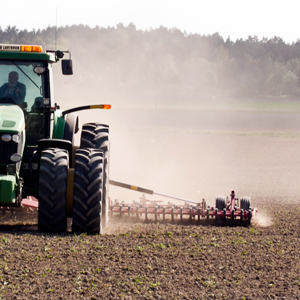Contact
Katharina Meurer, Researcher
Department of Soil and Environment
katharina.meurer@slu.se, 018-672476

A good understanding of the dynamics of soil structure formation and degradation is a prerequisite to counteract soil degradation. Soil degradation can occur through compaction by heavy machinery and soil erosion and leads to lower soil quality. By modelling soil structure dynamics we get a better understanding of the processes and have better chances of getting healthy soils that are a prerequisite for agriculture and crop production.
The structure of soil, no matter if on the field or in a plant pot, is defined by the spatial arrangement of solid material (for example grains) and pores. This arrangement sets the basis for a wide range of soil functions and processes and forms the living space for biological activity.
The dynamic changes of the soil structure are determined by the interaction of climate, plant and root growth, soil physics and biology and time scales involved range from seconds to centuries.
Soil structure determines soil quality, as it controls important soil processes, such as water and air movement, carbon and nutrient cycling, and plant growth. Consequently, a healthy soil is a prerequisite for agriculture and crop production. In turn, a good understanding of the dynamics of soil structure formation and degradation is a prerequisite to counteract soil degradation, which occurs for example through compaction by heavy machinery and soil erosion and leads to lower soil quality.
– I am involved in a project that simulate changes in soil structure and pore size distribution using field data from two sites. The first site is the “Soil structure observatory” (SSO) in Zuerich ,where the soil has been heavily compacted some years ago and is now given the chance to recover, says researcher Katharina Meurer.
– The second site is the Ultuna Frame Trial which is a long-term experiment that started in 1956. Here, we target the buildup or decrease of organic matter following different fertilization treatments, continues Katharina.
The aim of these experiments is to be able to give assumptions on soil recovery and structure development, which in turn is an indicator for soil quality.
– This will be of interest to farmers dealing with already degraded soils and can help preventing further degradation in the focus of climate change, i.e. altered rainfall patterns and drought conditions, concludes Katharina.
Katharina Meurer, Researcher
Department of Soil and Environment
katharina.meurer@slu.se, 018-672476